In this complete guide we will see everything about ramen, its types, ingredients, curiosities, recipes, composition, dough and everything you need to know about the traditional Japanese noodles in the broth that conquered the world.
Ramen or ramen [拉麺] is a Chinese dish that has increased in Japanese cuisine, with different ingredients and recipes, but maintaining the same preparation base. This noodle soup is one of the most popular and consumed dishes in Japan.
Table of Content
What is a ramen?
Ramen is a simple dish consisting of a noodle soup with a variety of ingredients and flavors. Usually restaurants make the noodles used in the dish, as well as soba and udon.
There are a multitude of types of ramen. They can have beef, seafood, miso soup, vegetables and some go further and are prepared with exotic ingredients. There is even charred and black ramen.

Difference between Lamen and Ramen?
Ramen or Lamen, what is the correct name? - In Japan, there is no letter "R," so the traditional Chinese name lámian kind of turned into ramen when it was exported to Japan. There is no right or wrong, so we use both forms randomly in the text.
In Portuguese it is more common to find ramen. But we believe that ramen is the most accurate way to refer to the Japanese dish. Ramen generally refers to the Chinese method of preparation, but both are bowls of hot broth with noodles.
The name " ramen " means stretched dough [拉] ( la ) and noodles [麺] (men). He is therefore the protagonist of the dish. Wheat flour, egg and water, are the three basic ingredients that produce this variety of pasta.
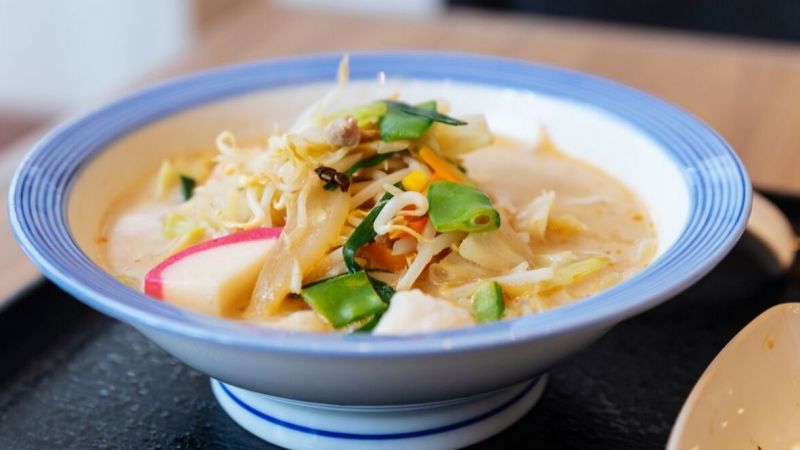
History of Ramen in Japan
Some claim that ramen was introduced to Japan by Chinese immigrants in the late 19th century. A simple noodle dish with broth and sliced pork in the Chinese style. It is not known if this idea had been used before.
It was only at the end of World War II that the dish became truly popular in Japan. The food scarcity, along with the abundance of wheat flour and pork lard, led to the emergence of thousands of ramen restaurants all over Japan.
The lámen was sold at food stalls called yatai for low prices, becoming a great salvation after the war. By 1980, it was a craze with each region of Japan having its own ramen.
In Brazil, the dish also became popular during this time with the immigration of Japanese people to Brazil. In São Paulo, there have been ramen houses since 1950. It's a pity it hasn't spread to other regions without a large concentration of Japanese people.
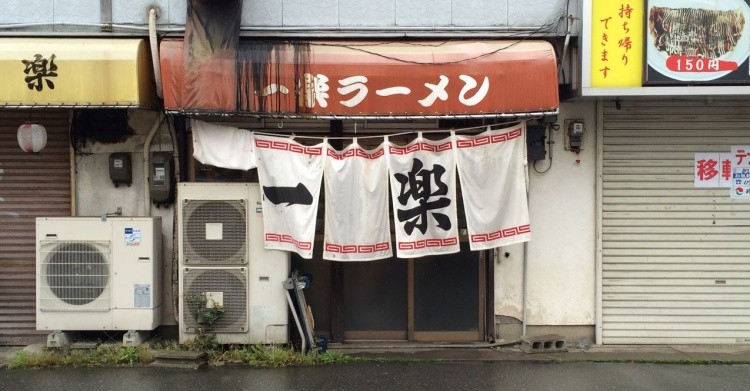
How is ramen made?
Ramen is usually made as a spice, there are even experts who investigate ramen restaurants across the country looking for the perfect flavor. Its preparation consists of two important things, the pasta and the broth.
How is the ramen noodles?
An important feature is that it uses wheat flour as the raw material instead of buckwheat like soba. In addition, an alkaline salt solution called brackish water is added, which differs from traditional pasta from Japan and the West.
Generally, the noodles of the ramen houses are homemade, some use a machine to cut and manufacture it, but some are totally handmade, others are industrialized, but the real ramen factories do it in a homemade way.
Noodles can also be classified according to thickness as “thin noodles”, “medium thin noodles”, “medium thick noodles”, “thick noodles” and the like. Macaroni crimping is also considered.
The main dough is usually based on wheat flour, salt and water, where the formats change in thickness and texture. You can also use hosomen (thinner), somen (made with just wheat and water), soba (made with buckwheat), and udon (thicker).
If you are interested, we recommend reading the article on types of Japanese noodles.

How is the ramen soup?
Ramen soup is called “ supu ” [スープ]. Soup is a very important factor that determines the taste of ramen, and most ramen houses use an elaborate and time-consuming soup. The soup is usually made with several ingredients.
Vegetables, soy sauce, bonito flakes and chips, chicken bones, pork, beef, trimmings and seaweed, vegetables, leeks, ginger and garlic are usually used. Everything will depend on the type of ramen, but the possibilities are great.
The sauce to be seasoned has a fragrance that floats and changes flavor when heated for a long time, so dashi and sauce are prepared separately. There are also commercial soups that allow you to speed up this sauce production process.
Basic aromatic seasonings (miso, salt, soy sauce) spices and seasonings (sugar, salt, umami, mirin, sake, vinegar) and other ingredients (vegetables, seaweed, fruits, a mixture of paste and powder or extract) are also used. of meat).
Flavoring oil that emphasizes richness and umami can also be used. Garlic-based oils, spicy oils, lard, chicken oil, shrimp oil, vegetable oils with strong characteristics such as olives and sesame, herbs and flavors.
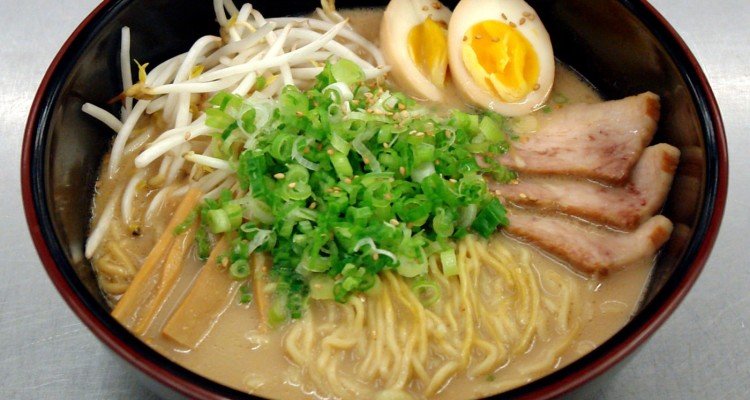
Differences between ramen and noodles
Miojo is an industrial instant noodle that promises to bring the flavor of ramen to your home. The truth is that, despite being very popular, Miojo is far from ramen, which is a handmade noodle.
Handcrafted ramen takes hours and hours to make, while Miojo is made in just 5 minutes. And even if we put ingredients in Miojo, it will never come close to ramen.
The ramen has a totally different texture, aroma and taste, a completely unique sauce and not that sachet of seasoning that comes with instant noodles. Not even Cup Noodles comes close to ramen.
There are ramen sauces that take about 20 hours to make. A professional ramen cook needs to graduate if he wants to make perfect ramen. Never! Never compare ramen with noodles.

Types of Ramen
There are types of ramen found in different restaurants. Although each place has its own unique flavor, we can categorize the main ones as:
Shoyu ramen
Shoyu ramen [醤油ラーメン] or soy sauce soup ramen is considered the staple flavor of ramen. Depending on the broth that is combined, it is divided into a wide range of types, from light, refreshing soups to thick, cloudy soups.
There are many types of ramen that reflect regional characteristics, as seafood soup stock and soy sauce are sometimes boiled together with mirin. It's tasty without being cloying. One of the main types of ramen in Japan and the most balanced.
Soup broth is made by boiling chicken and other ingredients for several hours, but there are several ramen shops that also use pork or beef bones as ingredients for soup broth. Most local ramens are soy sauce based.
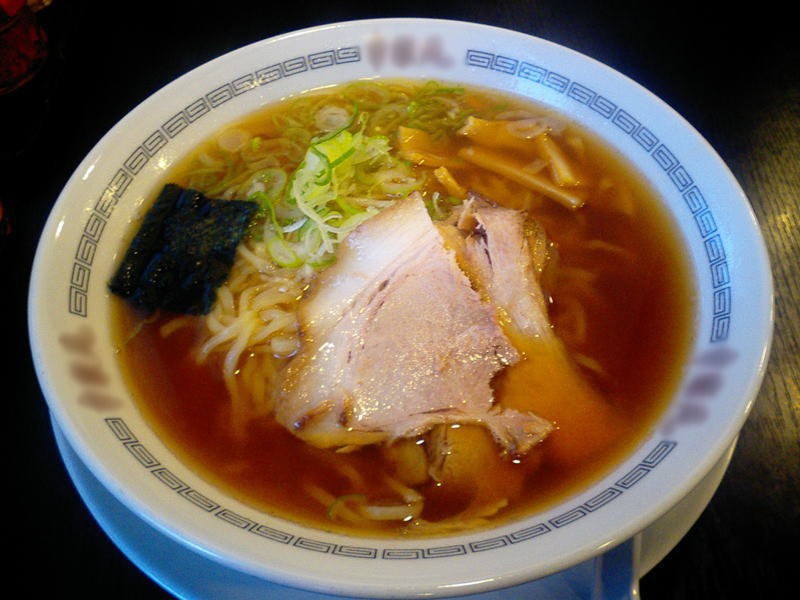
Shio ramen
The shio ramen [塩ラーメン] has a broth based on salt. But don't think it is the simplest of the others. Even though salt is its base, the flavor goes well beyond and the amount of ingredients as well.
Soup broth characteristics are likely to appear than in soy sauce ramen , this is because the sauce itself has a lighter flavor than others, your soup is not cloudy because it does not boil heavily like others.
The soup is usually seasoned with chicken sauce and pork bones. As the name says, its base is salt, so expect something salty, but nothing that Brazilians are not used to. Some add pepper and even soy sauce.
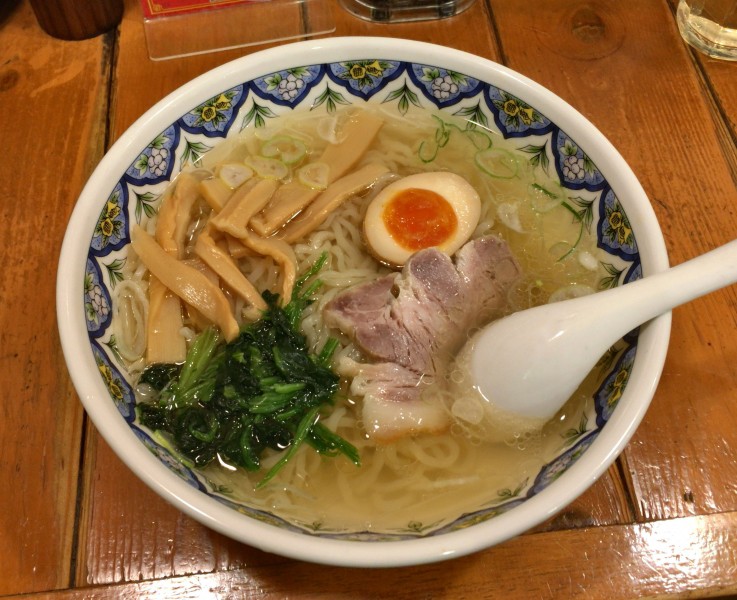
Miso Ramen
Miso ramen [味噌ラーメン] or miso soup ramen is characterized by the scent of miso and more depth in the broth. There are several types of miso, many have a rich flavor, others even use roasted miso.
Miso ramen was invented in Sapporo in the year 1955 by Morito Omiya, the owner of the restaurant Aji no Sanpei in Sapporo. It is quite likely that other miso ramen appeared in Japan without Sapporo's influence.
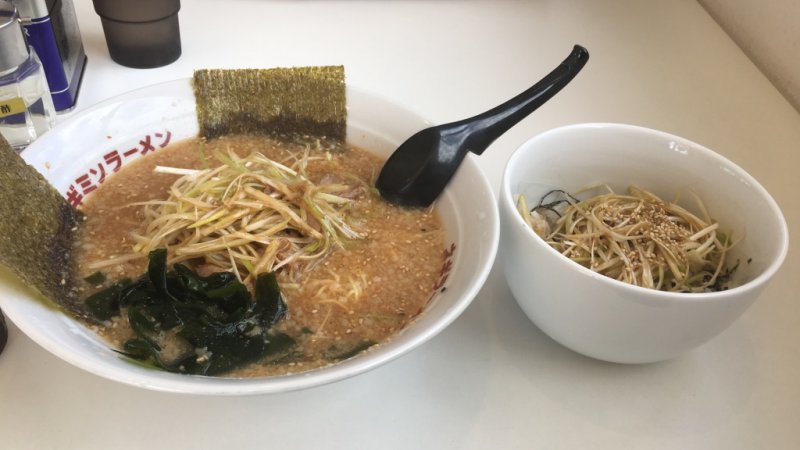
Other Ramen Grades
We've looked at Japan's top 3 ramen classifications, but there are many more types that we'll briefly summarize. It is also worth noting that ramen can be classified by ingredients, meat and even the type of broth (we saw the base of the broth).
Hot white soup - paitan [パイタン] - It has a cloudy color and can use pork or chicken, along with vegetables and fish bones. The white broth is called sayu [白湯] while the traditional broth is shoyu [清湯].
Soup broth - jingtan [チンタン] - Dashi soup without cloudiness, uses egg white to remove cloudiness. It tends to have a fresher taste compared to white hot water soup broth.
Curry soup - karedashi [カレー出汁] - Specialty curry ramen shops usually use seasonings to complement the curry. Many have claimed to create the curry-based ramen broth, but its origin is uncertain.
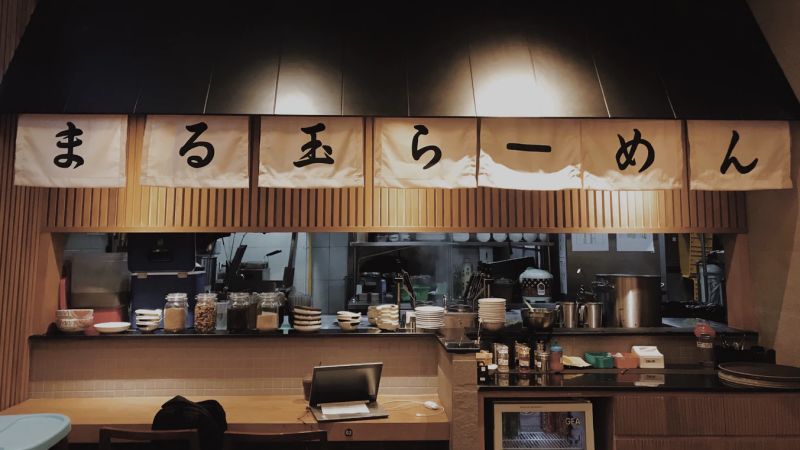
Remembering that the soups and broths above are used together with base broth that can be salt, soy sauce or miso. There are other types of ramen or noodle recipes that can be mentioned below:
TanTan Men – Noodles that originated in China, well-seasoned, for those who enjoy stronger and spicier flavors. Tanmen is a savory noodle soup made by boiling the soup and noodles along with other base ingredients.
Tsuke Men – Ramen where the noodles are served separately and you have to dip them in the thick sauce while eating.
- Chāshūmen [チャーシュー麺] noodles with lots of chāshū, pieces of roasted pork;
- Wantanmen [ワンタン麺] wonton noodles popular in other countries;
- Paakoomen [パーコー麺] with fried ribs or fried meat, some serve boiled ribs;
- Chanponmen [チャンポン麺] made of fried meat and vegetables with eggs;
- Amatsumen [天津麺] made with crab balls served with thick bean paste;
- Gomokumen [五目麺] from the Kanto region that uses various ingredients;
- Kantonmen [広東麺 uses Cantonese noodles;
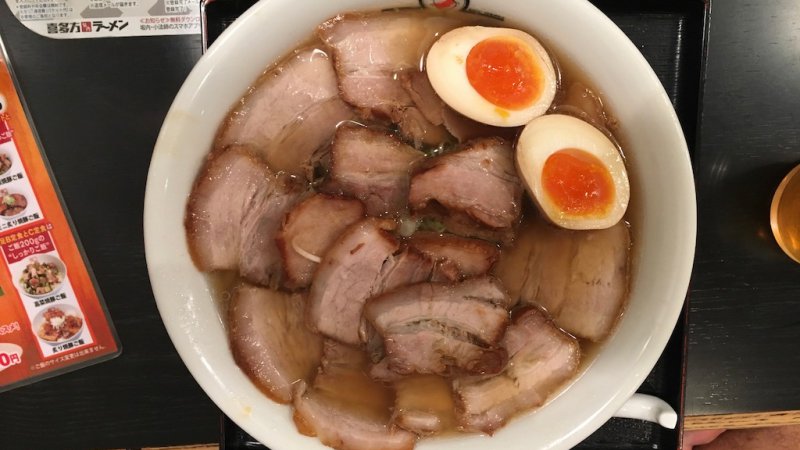
Typical Ramen Toppings
In addition to broth and noodles, we have other traditional ingredients that are present in almost every ramen dish, see below a list of main ingredients that serve as toppings for ramen:
Menma (fermented bamboo shoots)
Menma are fermented bamboo shoots. Its pleasant crunchiness provides an additional textural element when eating ramen. Some restaurants also make their own menma.
CharSiu (pork slices)
Charsiu or chāshū are slices of roasted or boiled pork, usually seasoned with soy sauce. It is one of the main ingredients that attracts the attention of carnivores and is present in most ramen dishes.
Kamaboko and Naruto (Fish Cakes)
Naruto-maki are steamed cakes made from processed fish paste, shaped like a swirl when cut into cross-sections. Its name is said to be due to the whirlpools that form in the Naruto Strait in Tokushima Prefecture.
These fish cakes are also called kamaboko or surimi and can have different shapes and colors, but naruto is the most common one to be used. It's the same as that kani we found in Brazil.
Moyashi (bean sprouts)
These edible legumes are grown artificially without being exposed to sunlight, creating vegetables that are rich in nutrients like vitamin C. Bean sprouts from western Japan are thin and long, while those from eastern and northern Japan are thick and crunchy.

Wakame and Nori (seaweed)
Nori are thin, edible sheets of seaweed. Their crunchy texture and aroma are also used in sushi. They provide a high content of minerals and nutrients and a scent of the sea. If you want to know more, we have an article about nori.
Wakame is a variety of seaweed that is quickly boiled and used as a topping for ramen. The wakame has a firm texture, pleasant fragrance, and high nutritional value. There is also kuki wakame ramen, which uses stalks of wakame as a topping.
Beni-shoga (pickled ginger)
Beni-shoga, or pickled ginger, is a must-have in any tonkotsu ramen bowl, providing a layer of contrasting flavor. Ginger is pickled in salt, or dried in the sun and then in plum vinegar.
Kikurage (sliced mushrooms)
These black mushrooms grow on fallen trees and dead branches from spring to autumn. They are mostly eaten in East Asia and as a topping for ramen bowls in Japan.
In addition to the Japanese ingredients mentioned, we also have:
- onions;
- Leek;
- Boiled eggs;
- Corn;
- Butter;
Gourmet Ramen - Learn how to make your own Ramen
You will find ramen recipes in abundance on the internet, but it is difficult to make perfect ramen like ramen restaurants in Japan. It is also very difficult to find a ramen restaurant in most cities in Brazil.
With this in mind, the Lamen Gourmet course was created, which teaches the creation of professional ramen for your own consumption or to set up your own restaurant, or increase the menu of your sushibar. Whatever your intention, we recommend Lamen Gourmet!
The Lamen Gourmet course will teach you how to make the 5 most popular types of ramen in Japan. You will learn how to make Shio Lamen, Shoyu Lamen, Misso Lamen, Tantan Lamen and Tsukemen.
The course will teach step by step from choosing ingredients, initial preparations, and the ideal sides. As a bonus, it will also teach how to make the famous karaage, unique Japanese fried chicken.
Ramen is not as easy to prepare as some might think. Sometimes hours are spent preparing ingredients, not to mention the difficulty of finding such ingredients. That's why we recommend accessing Lamen Gourmet using the button below:
Miso Ramen recipe
Making ramen is not an easy task. Some specialize for years to prepare the perfect ramen. Making ramen can be more complicated than becoming a sushi chef, which is why you might want to learn with the Lamen Gourmet course.
Recently I've been inventing to make my own ramen. While searching the internet I came across a lot of different recipes, so I kind of ended up inventing my own recipe using the ingredients I had here.
If you want the exact measurements of the suggested ingredients, right after this recipe we will mention a recipe for Shoyu Ramen. You can follow it from base because both are similar. I'll try to explain in my words how I did it.
First I fried the miso paste with ground beef (pork is recommended) until very consistent, then I added water and other seasonings like onion, hondashi, ajinomoto and a little soy sauce to taste.
I cooked this broth for more than half an hour, it ended up evaporating a lot, but its taste reminded me a lot of traditional Japanese ramens. The rest is to put the broth in the cooked noodles and add the ingredients that embellish the dish.
I didn't have any pork slices, nori, or naruto or other traditional ingredients to add to the lamen. I just added slices of boiled egg and a kibbeh (lol). Even so, it was a simple, easy, and delicious recipe. If you don't have the ingredients, invent!
What dictates the taste of ramen is the cooking time of the broth. That's why there are restaurants that boil the broth for hours and hours, others even leave the broth black, but surprisingly the taste is delicious and nothing related to something burnt.
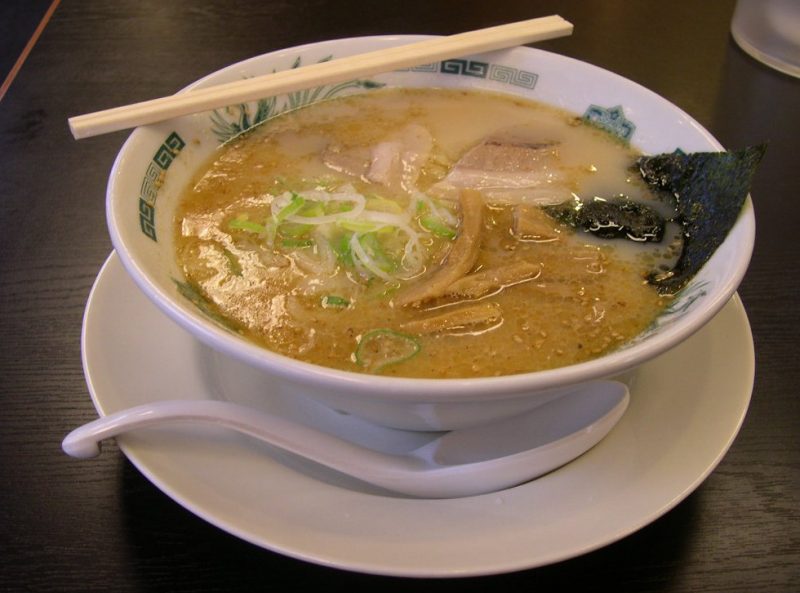
Shoyu Ramen recipe
Now let's leave a recipe for you to try to prepare the most common type of ramen based on soy sauce:
Ingredients for the paste:
- 1/4 onion
- 4 whole garlic cloves
- 1 stalk of chives
- 4 slices of ginger
- 1 celery stalk
- 7 tablespoons of Mirin Kenko Sake
- 3 tablespoons of Sakura Light
- 3 tablespoons of Kenko Sesame Oil
- 1 tablespoon of Seasoning for Sushi Kenko
- 2 tablespoons powdered chicken stock
- 1 teaspoon of salt
- Black pepper to taste
- 1 tablespoon of powdered fish stock
- 20 g pork lard
Ingredients for the broth:
- 3 cups of water (tea)
- 1 tablespoon of powdered fish stock
- 1 tablespoon of Sakura Light
- 1 teaspoon of salt
- Black pepper to taste
- 2 tablespoons of the paste
Ingredients for assembly:
- 200g cooked ramen noodles
- chopped chives to taste
- Kamaboko (fish noodles) sliced to taste
- Boiled egg cut in half to taste
- Wakame (seaweed) to taste
- Moyashi (bean sprouts) to taste
- Burnt chives (chives fried in a little oil) to taste
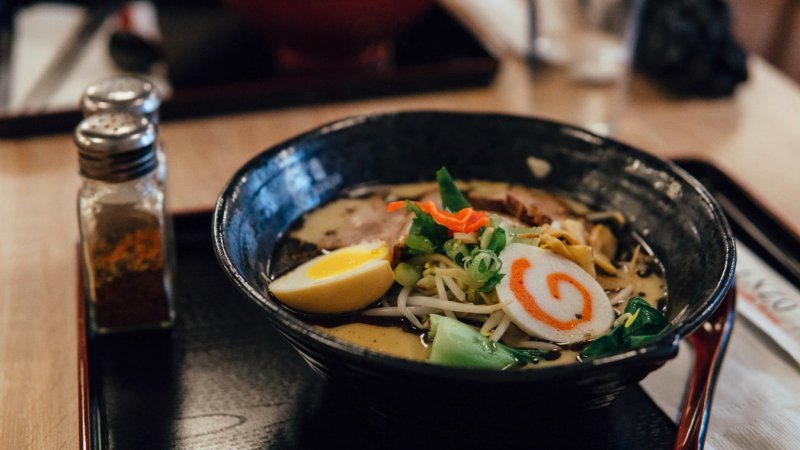
Preparation mode:
1 - To prepare the paste, put in a blender: onion, garlic, chives, ginger, celery, Mirin Kenko Sake, Sakura Light, Kenko Sesame Oil, Kenko Sushi Seasoning, chicken broth, salt, black pepper and fish broth.. Then, bring this mixture to the fire, add the lard and boil for 5 minutes or until the broth is consistent, a paste. Reserve.
2 – To prepare the broth, in a pan heat the water, add the fish broth, Sakura Light, salt, black pepper and the paste. Mix until dissolved. Turn off the heat and set aside.
In a large and deep bowl, place the still hot noodles, add the hot broth and finish with chives, kamaboko, boiled egg, wakame, moyashi and burnt chives. Serve immediately.
Finally, let's leave the recipe video below:
How to eat Ramen?
There is a whole culture behind the consumption of noodles in Japan, you need to suck the noodles and make noise with taste to show that you are enjoying the dish. Of course it's not to swallow the pasta, chew it and enjoy the flavor.
Usually the ramen bowl comes with chopsticks to get the noodles and a spoon to take the soup along with other ingredients like egg. You can also drink the ramen broth straight from the bowl without any problem.
Eating ramen consists of appreciating a little of the noodles, broth and ingredients that cover the dish. If it is a tsukemen, the noodles and broth are served in separate bowls. It is enough to dip in the broth the amount of pasta that you are going to put in your mouth.
